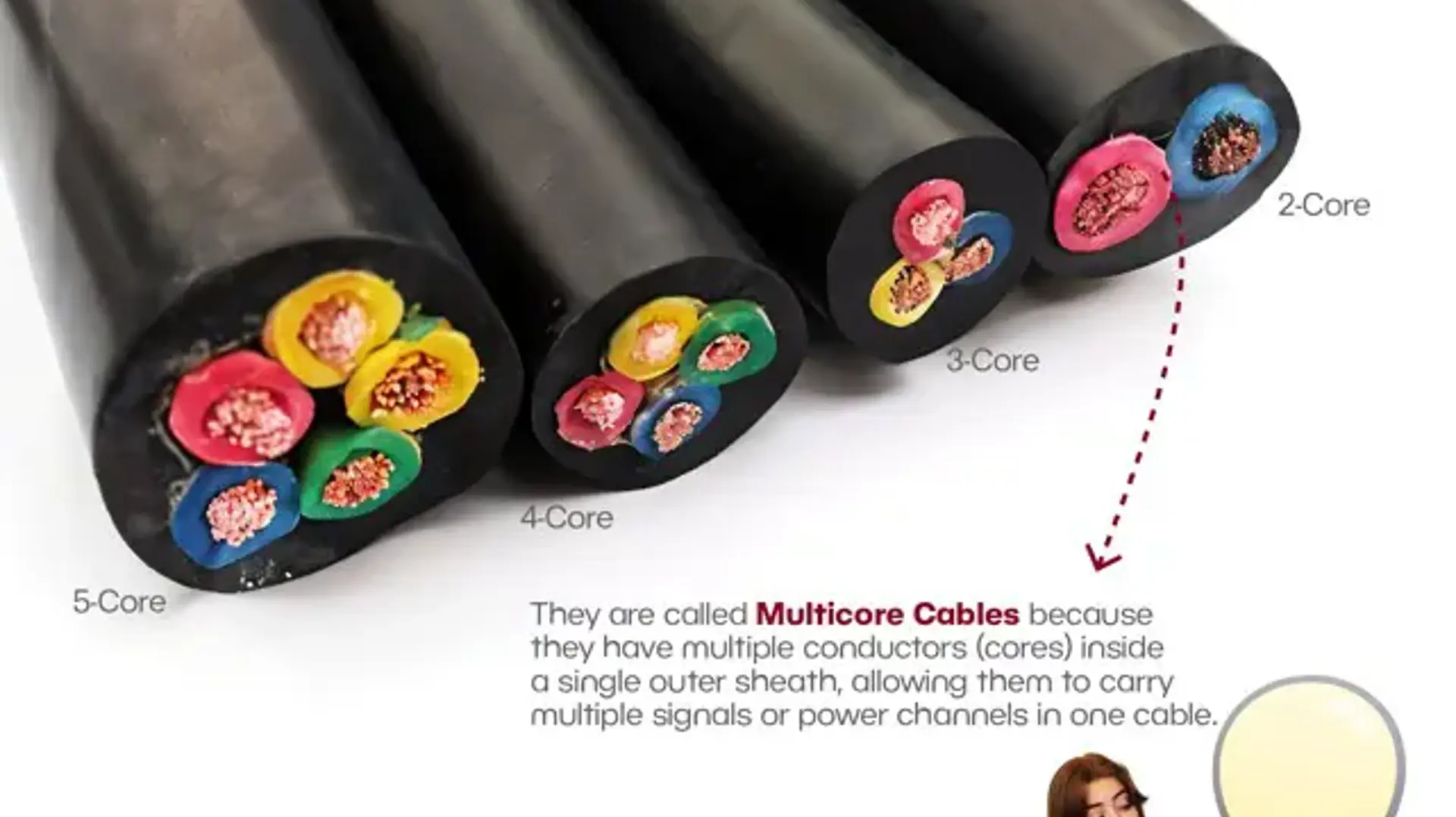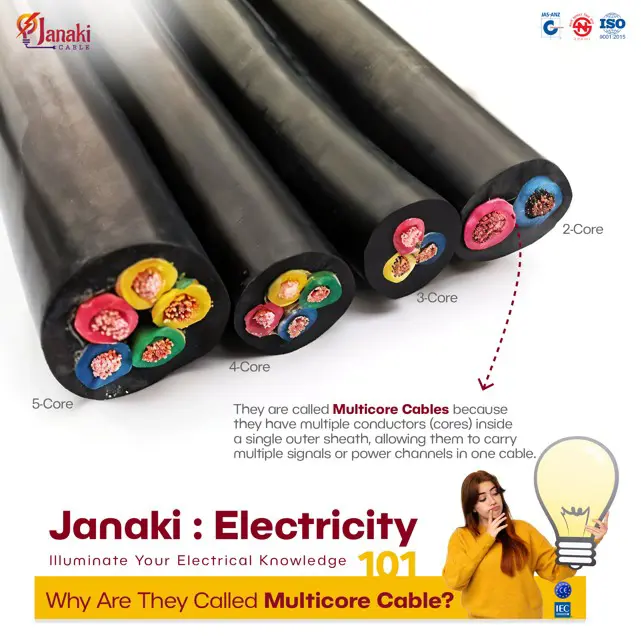- +977-9817826183
- info@janakicable.com
Janaki Electricity 101 :Understanding Multicore Cables

Janaki: Electricity 101 : Understanding Multicore Cables: What They Are and Why They Matter
In today’s interconnected world, cables are the lifelines that power our homes, industries, and cities. Whether it's electricity flowing through homes or data being transmitted across networks, cables are at the heart of it all. One essential type of cable is the multicore cable. But what exactly makes multicore cables special, and why are they so commonly used in both domestic and industrial applications?
In this blog, we will explore what multicore cables are, why they are called so, and the different types you might come across in various applications.
What Are Multicore Cables?
Multicore cables are cables that contain multiple conductors (cores) inside a single outer sheath. Each core is an individual wire, and they can carry separate electrical signals, power, or data streams independently. These cables are designed to provide multiple channels of communication or power in a single, compact cable structure.
The key benefit of multicore cables lies in their versatility. Whether it's for electrical systems, communication networks, or industrial applications, multicore cables can help streamline wiring, reduce clutter, and improve system efficiency.

Why Are They Called Multicore Cables?
The term multicore comes from the fact that these cables feature more than one conductor or "core" inside. Each core inside the cable is made of a conductive material, typically copper or aluminum, and is insulated separately to prevent short circuits.
The multiple cores enable the cable to carry several signals or power channels simultaneously. This makes them a perfect choice for various applications where multiple connections need to be made within a single cable. Instead of running multiple individual wires, a multicore cable bundles all the conductors together for easier management and better organization.
Different Types of Multicore Cables
Multicore cables come in different configurations, each designed for specific purposes. Here are some of the most common types:
1. 2-Core Cable
The 2-core cable is the simplest type of multicore cable. It contains two conductors: one live (or phase) wire and one neutral wire. This configuration is often used for simple power transmission applications, like in home appliances or lighting circuits.
- Usage: Basic electrical systems where only live and neutral conductors are needed.
- Common Applications: Power transmission for low-voltage devices, simple wiring in homes.
2. 3-Core Cable
The 3-core cable contains three conductors: one live, one neutral, and one earth (or ground) wire. The addition of the earth wire is important for safety, as it provides a path for electricity to safely flow to the ground in case of a fault, preventing electrical shocks or fires.
- Usage: Common in household and commercial electrical systems where grounding is required for safety.
- Common Applications: Electrical wiring for domestic appliances, lighting circuits, and general-purpose electrical systems.
3. 4-Core Cable
The 4-core cable contains four conductors: one live, one neutral, and two earth (or ground) wires. This configuration is frequently used in three-phase systems, which are commonly found in industrial settings. The additional earth wire provides extra protection.
- Usage: Ideal for three-phase electrical systems that require an additional earth or neutral conductor.
- Common Applications: Industrial machinery, three-phase motors, and commercial systems.
4. 5-Core Cable
The 5-core cable has five conductors: one live, one neutral, and three earth wires. These are typically used in applications that require additional control or grounding, especially in industrial settings. The three earth conductors offer a high level of safety by ensuring the cable remains well-grounded in case of a fault.
- Usage: Used in industrial settings where higher protection and control are needed.
- Common Applications: Heavy-duty machinery, three-phase control systems, and industrial automation.
Why Choose Multicore Cables?
Multicore cables offer several advantages, which is why they are widely used in various sectors. Some key benefits include:
- Reduced Wiring Clutter: Instead of running multiple individual wires, multicore cables bundle them into one cable, making it easier to manage and install.
- Improved Safety: The multiple cores within the cable are insulated, reducing the risk of short circuits. In cases where grounding is required, multicore cables provide additional conductors for safety.
- Cost-Effective: By reducing the need for multiple cables, multicore cables can lower material costs and installation time.
- Space-Saving: The compact design of multicore cables allows for easier routing through tight spaces and conduits.
- Versatility: Multicore cables are used in a wide range of applications, from simple home wiring to complex industrial systems.
Conclusion
Multicore cables are an essential part of modern electrical and data systems. Whether you need to transmit power, control signals, or data, multicore cables offer a reliable and efficient solution. Understanding the different types of multicore cables—2-core, 3-core, 4-core, and 5-core—is essential when selecting the right cable for your application.
At Janki Cable Industry, we offer high-quality multicore cables designed to meet all your electrical and industrial needs. Whether you need a basic 2-core cable or a heavy-duty 5-core cable for industrial applications, we have the right solution for you.
Stay connected, stay safe, and choose the best cables for your systems with Janki Cable Industry!









